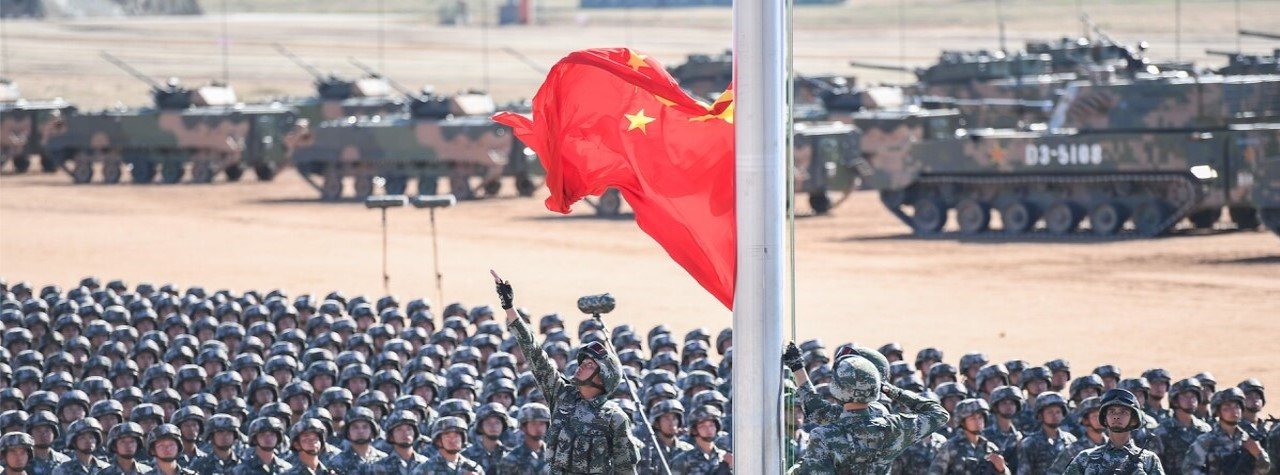

Dec
We have referred to the military dimension of China every now and then here on ChinaFund.com and have even written an article dedicated exclusively to its military sector, which we would recommend reading before getting started with the current article.
As a bit of a “cliff notes” introduction, let’s just say that if we were to think of sectors where China excels, the military sector would not represent a top choice. This is not because tremendous progress has not been made. On the contrary, that has definitely been the case. However, due to the previously mentioned progress not being as impressive as when it comes to other sectors and due to endogenous issues which are especially prevalent in the military sector such as corruption (although the Xi Jinping administration has been very determined to tackle this issue), we will limit ourselves to stating that the military sector tends to be an under-performer by Chinese standards.
However, precisely because the standards in question are quite high (with China achieving staggering progress when it comes to anything from infrastructure investments to hi-tech industries), this does not mean China should be considered a militarily weak nation. On the contrary, leaving obvious exceptions such as Japan aside, China’s military capabilities make those of most nearby countries pale by comparison.
Can we therefore state that China is poised to dominate regional military conflicts?
Well… yes, but not really. In other words, while it is true that its military capabilities put those of much weaker nearby countries to shame and it would have no problems dominating small-scale regional conflicts, it is precisely the “small-scale” dimension that is problematic.
To put it differently, due to the dramatically interconnected nature of today’s geopolitical system, even seemingly small-scale regional conflicts could easily degenerate to events with wider-spread implications and once we embrace a global perspective on military conflicts, the status quo changes… and not in China’s favor.
Why?
Simply because, on a global scale, NATO in its current form doesn’t really have that much of an adversary. As impressive as China’s defense spending can be considered (roughly $175 billion at the moment of writing), it can come nowhere near to the over $1 trillion 2018 figure for NATO as a whole or approximately $700 billion for the United States alone.
Leaving current budgets aside, China’s military forces are still dealing with issues that pertain to proverbially catching up with the West, both in terms of military infrastructure and know-how… in a nutshell, we will state that China is not quite there yet and limit us at that.
However, once again, the trend is China’s friend.
Or, to be more precise, the plural (trends) can be used because two important dimensions become obvious:
- Tensions within NATO, with the United States being more and more vocal with respect to its frustration with the fact that NATO members (including or especially wealthy nations such as Germany) are not living up to their end of the agreement as far as the 2% GDP spending goal is concerned. Furthermore, it is worth pointing out that these tensions go well beyond economics, with key NATO members such as Turkey having geopolitical agendas which conflict with those of NATO when it comes to sensitive situations such as the uncertainties surrounding Syria. From unilaterally embarking on projects in Syria to signing defense purchase deals with Russia of all providers in some instances, let’s just say the cracks within NATO are more than apparent
- While this is unfolding, China’s economy keeps growing, with infrastructure in general and military infrastructure in particular being included in the equation. With each year that passes, China continues scoring points in the “catching up” department and as such, it has no issues whatsoever patiently playing the waiting game
And, indeed, “waiting game” is the operative term if we are to articulate a conclusion to this article which constitutes an answer to its title. At this point in time, it is quite obvious that China is more than capable of dominating small-scale regional conflicts and when it comes to the bigger picture, the trend can be considered China’s friend. In other words, while it is nowhere near capable of contemplating let’s say parity with NATO, the balance keeps slowly edging in its favor as it continues playing the waiting game, as a result of both endogenous progress (economic growth with its ramifications in terms of defense) and exogenous trends (primarily potential NATO weakness).
As always, however, volatility is to be expected in the world of geopolitics and we cannot end this article without making it clear that in our interconnectedness-oriented economic paradigm, military conflicts in general and especially military conflicts which mimic those of the past are disincentivized. Instead, what we have is a complex game of following geopolitical interests, with innovative types of warfare (propaganda warfare, cyber-attacks, etc.) sprinkled in.
